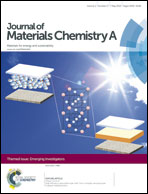Telluride nanowire and nanowire heterostructure-based thermoelectric energy harvesting
Abstract
Americans have a reputation for being ‘energy hogs’, using more per capita than in most places around the world. We also unnecessarily waste energy through inefficient energy transfer systems that continually leak it into our environment in the form of heat. Most of this waste heat is low-grade, 40 °C to 200 °C, a level that is generally considered economically infeasible for recovering at high efficiency. The rapid development of thermoelectric (TE) materials in the past decade has raised new hopes for the possibility of directly converting some of this waste thermal energy back to electricity through the Seebeck effect. Although the use of nanowires and nanocrystals in TE materials has been recently shown to improve the performance, it remains unclear whether the production of such materials can be made in scalable, reliable, and economical ways. Most of the previous research in this field has been limited to laboratory-scale device fabrication and to measurements performed on single nanowires or thin films of nanocrystals or heterostructures with maximum dimensions of hundreds of micrometers. Usually only milligrams of these nanomaterials can be obtained. Moreover, there are large variations between different batches. In this feature article, we discuss our contribution to solve the scalability challenge in TE nanomaterial production. Through a rational design of compositional-modulated nanowire heterostructures, we can explore new platforms to optimize the TE performance in bulk nanocomposites and to study the beneficial effects at the interfaces, such as energy filtering, modulation doping and phonon scattering.

- This article is part of the themed collection: Emerging Investigators

 Please wait while we load your content...
Please wait while we load your content...